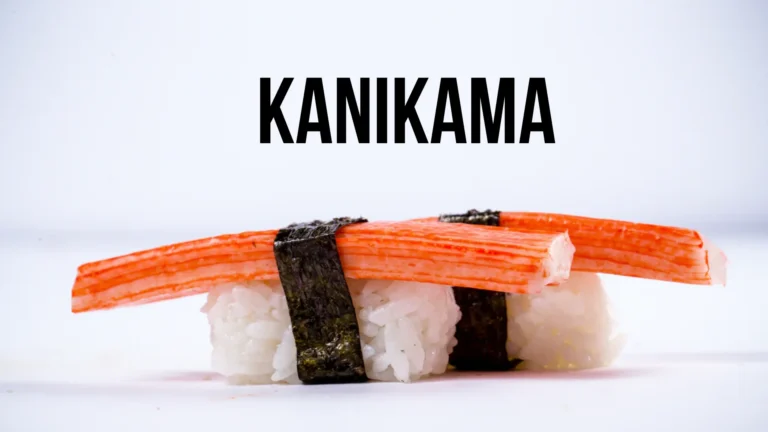Kanikama, commonly known as imitation crab meat, is a seafood product made primarily from surimi, a paste derived from white-fleshed fish. Its taste, texture, and versatility make it a popular ingredient in a variety of dishes, especially in Japanese cuisine. This article delves into what Kanikama is, its uses, nutritional benefits, and how to incorporate it into your meals.
ALSO READ: Exploring Ancient Arts: Timeless Masterpieces And Techniques
What Is Kanikama?
Kanikama’s is often referred to as imitation crab meat, and it mimics the taste and texture of real crab. The primary ingredient in Kanikama’s is surimi, which is made from fish like pollock or hake. The fish is washed, minced, and blended with various additives, such as starch, sugar, and egg whites, to enhance its flavor and texture. The mixture is then shaped and formed into crab-like sticks or chunks.
How is Kanikama Made?
The production of Kanikama’s involves several steps:
- Selection of Fish: High-quality white fish is chosen for making surimi.
- Processing: The fish is cleaned, filleted, and minced into a fine paste.
- Blending: Additives like starch, salt, and seasonings are mixed in to create the desired flavor and texture.
- Shaping: The mixture is formed into sticks or other shapes.
- Cooking: The Kanikama is then cooked to enhance its flavor and ensure safety.
The Origin of Kanikama
Kanikama’s originated in Japan during the 1970s as a cost-effective alternative to real crab meat. It quickly gained popularity and has since become a staple in many countries, particularly in sushi and salads.
Nutritional Benefits Of Kanikama
Kanikama’s offers several nutritional benefits that make it a great addition to a balanced diet:
Low in Calories
Compared to real crab, Kanikama’s is often lower in calories, making it a suitable choice for those looking to manage their weight without sacrificing flavor.
High in Protein
Kanikama is a good source of protein, essential for muscle growth and repair. It can be an excellent choice for those following a high-protein diet.
Omega-3 Fatty Acids
While Kanikama’s does not contain as many omega-3 fatty acids as real crab, it still offers some beneficial fatty acids that support heart health.
Rich in Vitamins and Minerals
Kanikama contains several vitamins and minerals, including vitamin B12, which is important for energy metabolism and brain health.
Low in Fat
Most varieties of Kanikama’s are low in fat, making them a heart-healthy option compared to many meat products.
Culinary Uses Of Kanikama
Kanikama’s versatility allows it to be used in various culinary applications. Here are some popular ways to enjoy this imitation crab delight:
Sushi and Sashimi
Kanikama’s is a common ingredient in sushi rolls, particularly in California rolls. Its texture and flavor make it a perfect substitute for real crab in sushi dishes.
Salads
Imitation crab meat adds a delicious twist to salads, such as crab salad or seafood salad. It pairs well with creamy dressings and fresh vegetables.
Soups and Stews
Kanikama can be added to soups and stews, imparting a seafood flavor without the need for fresh crab. It works wonderfully in dishes like seafood chowder.
Appetizers
Kanikama’s can be used to create a variety of appetizers, such as crab cakes, stuffed mushrooms, or spring rolls. Its adaptability makes it a great choice for entertaining.
Stir-Fries
Adding Kanikama’s to stir-fry dishes brings a unique flavor and texture. It pairs well with a variety of vegetables and sauces.
How To Choose The Best Kanikama
When purchasing Kanikama’s it’s essential to choose high-quality products. Here are some tips:
Check the Ingredients
Look for Kanikama that lists surimi as the first ingredient. Avoid products with excessive additives or fillers.
Freshness
If buying from a seafood counter, ensure that the Kanikama’s is fresh and well-refrigerated. Frozen varieties should be solid without any ice crystals, indicating proper storage.
Brand Reputation
Opt for brands known for quality seafood products. Reading reviews can also help identify reliable options.
Packaging
Ensure that the packaging is intact and free from leaks. This ensures that the product has been stored properly.
Storing Kanikama
Kanikama’s can be stored in several ways depending on whether it is fresh, frozen, or shelf-stable:
Fresh Kanikama
Keep it refrigerated and consume it within a few days of purchase. Always check the expiration date.
Frozen Kanikama
If you purchase frozen Kanikama’s store it in the freezer until you’re ready to use it. It can last several months when frozen properly.
Shelf-Stable Kanikama
Some varieties come packaged for room temperature storage. These should be kept in a cool, dry place until opened.
Popular Recipes Featuring Kanikama
Here are a couple of delicious recipes to get you started with Kanikama’s
Kanikama Sushi Rolls
Ingredients:
- Sushi rice
- Nori sheets
- Kanikama’s sticks
- Avocado
- Cucumber
- Soy sauce (for dipping)
Instructions:
- Cook sushi rice according to package instructions and let it cool.
- Place a nori sheet on a bamboo mat.
- Spread a layer of sushi rice on top, leaving space at the edges.
- Add Kanikama, avocado, and cucumber in the center.
- Roll tightly and slice into pieces. Serve with soy sauce.
Kanikama Salad
Ingredients:
- 1 cup Kanikama’s shredded
- 1/2 cup mayonnaise
- 1 tablespoon lemon juice
- 1/4 cup diced celery
- Salt and pepper to taste
- Lettuce leaves for serving
Instructions:
- In a bowl, combine Kanikama, mayonnaise, lemon juice, and celery.
- Season with salt and pepper.
- Serve on a bed of lettuce leaves for a refreshing salad.
Conclusion
Kanikama’s is a delightful and versatile seafood product that brings the taste of the ocean to your table without breaking the bank. With its low calorie count and high protein content, it’s an excellent choice for those looking to enjoy seafood in various dishes. Whether in sushi, salads, or as a snack, Kanikama can enhance your culinary creations. So why not explore the many delicious possibilities that this imitation crab meat has to offer?
ALSO READ: Delicious Turrón: Traditional Spanish Nougat Recipes & Tips
FAQs
What is Kanikama?
Kanikama’s or imitation crab meat, is primarily made from surimi, a fish paste, and mimics the taste and texture of real crab. It’s popular in sushi and salads.
Is Kanikama healthy?
Yes, Kanikama’s is low in calories, high in protein, and contains essential vitamins and minerals, making it a nutritious option in moderation.
Can I cook Kanikama?
Kanikama is precooked, so it can be eaten cold or heated. It’s great in dishes like stir-fries and soups.
How should I store Kanikama?
Store fresh Kanikama in the refrigerator and consume it within a few days. Frozen varieties can last several months in the freezer.
Is Kanikama suitable for people with seafood allergies?
While Kanikama is made from fish, it often contains other ingredients. If you have a seafood allergy, it’s best to consult with a healthcare provider before consuming it.

